In Kagurabachi, much of the attention has naturally fallen on Chihiro Rokuhira, the revenge-driven protagonist whose mastery of enchanted blades makes him the face of the series. But as the chapters unfold, another figure has quietly emerged to redefine the role of the shonen deuteragonist: Hakuri Sazanami.
To understand Hakuri, we must first understand the world he comes from. The Sazanami clan is not just another family of sorcerers. They are predators wrapped in human skin, traffickers who store people like items in their subspaces and auction them off for profit.
Their sorcery, manipulation of shockwaves (Isou), and the creation of vast subspaces (Storehouses) are an extension of their philosophy: control, containment, and domination. From childhood, Hakuri was seen as a failure.
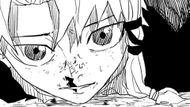
He could not perform Isou properly, earning him beatings from his siblings and rejection from his father. This rejection is more than personal; it reflects the clan’s cannibalistic nature. The weak are discarded. The strong thrive. The family that should have nurtured him became the very cage that suffocated him.
And yet, Hakuri’s exclusion from their elite corps, the Toe, became his greatest blessing. By being denied entry into the ranks of ruthless predators, he avoided complete indoctrination. Unlike Tenri, unlike Soya, Hakuri retained the capacity to see the cruelty for what it was and eventually reject it.
The Girl with icy skin: A turning point
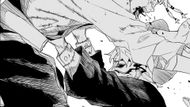
If the mantis introduced Hakuri’s duality, the Girl with icy skin solidified his rebellion. To the clan, she was nothing more than “merchandise,” just another nameless body to be auctioned off. For a fleeting moment, Hakuri believed he could save her.
But before he could, she ended her own life. This was not simply a tragedy for Hakuri. It was a revelation. It forced him to see the Sazanami’s cruelty in its rawest form and crystallized his conviction that he would never be like them.
If the mantis represented the possibility of escape, the girl represented the cost of inaction. Her death gave him purpose: to destroy the Rakuzaichi auction and to reject his family’s legacy.
The dual storehouses: Father vs. Son
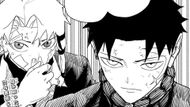
One of the most powerful symbolic contrasts in Kagurabachi is the difference between Kyora Sazanami’s Storehouse and Hakuri’s.
1) Kyora’s Storehouse: A vast subspace filled with treasures and people stolen from their lives, reduced to objects of profit. It is power used as imprisonment. A kingdom of cruelty masquerading as sorcery.
2) Hakuri’s Storehouse: A small, personal space unconsciously created from his pain. Unlike Kyora’s, it is not used to dominate others but to protect himself. It is a shield, not a cage.
Abilities and growth: Strength born of self-belief
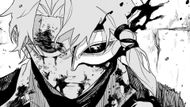
For much of his life, Hakuri in Kagurabachi believed himself talentless. Every failed attempt at Isou only deepened his self-hatred. But through his partnership with Chihiro and Shiba’s guidance, he discovered the truth: his spirit energy had been unconsciously fueling his Storehouse.
Once he learned to redirect that energy, Hakuri’s abilities began to flourish. He not only unlocked the potential of Isou but also proved to be one of the few sorcerers capable of wielding two types of unique sorcery, shockwaves and spatial manipulation.
His durability, honed by years of abuse, further sets him apart. Where others would have died, Hakuri endured. His body became as resilient as his spirit, even if he himself never saw it.
Why Hakuri in Kagurabachi works as a shonen deuteragonist
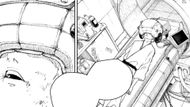
So has Kagurabachi cracked the code? The story argues yes, and Hakuri is the reason why.
Shonen deuteragonists often fall into familiar molds:
- The rival genius (Sasuke, Bakugo, Uryu).
- The comic relief best friend (Krillin, Usopp).
- The shadowed foil (Kurapika to Gon, Killua to Gon).
Hakuri doesn’t quite fit any of these. Instead, he represents a new archetype: the vulnerable deuteragonist.
In conclusion, Kagurabachi is a story filled with blades, blood, and vengeance; Hakuri represents the quiet strength of compassion. If Chihiro is the sword of Kagurabachi, then Hakuri is its heart. And together, they may just redefine what a shonen duo can be.
